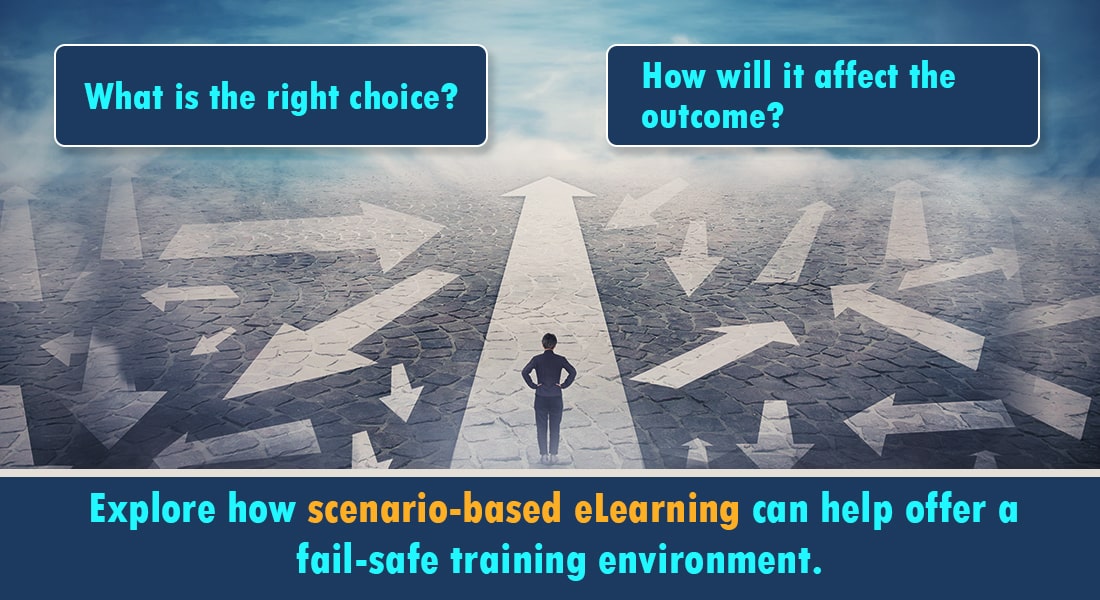Case Studies & Scenarios: Why and How to Use Them in Elearning Course?

In my previous blog, if you can recollect, I have mentioned about Edwin Gay, the first Dean of Harvard Business School, called case study the “problem method” and foresaw its value in creating leaders who are able to adjust to ever-changing business climates.
Again, according to an article by Ruth Clark, scenarios help to accelerate learning. Citing research from the University of Pittsburgh and the U.S. Air Force, Clark notes: “Imagine accelerating the know-how of two-year electronics technicians to the level of 10-year veterans with just 25 hours of training! Wow! No swallowing a red pill involved.” It might sound too good to be true. This is what is accomplished by the research team. A well-designed scenario has the ability to compress years of working experience into just a few training hours.
Case studies reflect real-life situations where problems need to be solved. Scenario-based learning is more focused toward building communication and teamwork skills. Case studies and scenarios are methods of problem based–learning. Using these methods, designers aim to enhance decision making, reasoning, and problem-solving skills.
When To Use Them?
Case studies and scenarios work best for nonroutine tasks such as making judgment or decisions, problem solving like troubleshooting, and teamwork skills. Learners taking eLearning courses are prepared to move on to a professional practice and they learn how their skills can be applied in a real-world situation, without being actually present in that scenario.
Benefits
Case studies are powerful learning devices that help learners in their thinking process. They produce the intended learning outcomes. The learners are able to identify and differentiate between critical and extraneous elements. Another important aspect of case studies is that you can achieve multiple results simultaneously within a short period.
Scenarios, on the other hand, suggest how learners should operate. The learners were given the opportunity to use their knowledge, and then given feedback about the choices being made.
Challenges
The main challenge in including a case study or a scenario in an eLearning course is: it is most appropriate for learners having work experience. For new learners, including a complex problem may impose mental load and it might bog them down.
Strategies: How To Use Them?
For an asynchronous mode of learning, the assessment strategy should be thinking of some open-ended questions (such as What, Why, What now, How, What next…?). These questions will help you analyze, identify issues, solve problems and formulate strategies accordingly. If a linear scenario is not presented, then you need to sequence all the actions in a logical order.
A A more recent study by Kumta et.al (2003) reported in ASTD, compared learning of medical students during a three-week orthopedics rotation. One group of learners received traditional training, including lectures and clinical rounds. A test group received the same traditional training, plus online case studies that were reviewed independently, followed by debriefing with a faculty advisor. Learning was significantly better among learners who had access to the online scenarios.
To summarize, case studies and scenarios are widely used in higher education, particularly in disciplines such as law, management, medicine, and designers should use these particular devices in eLearning to engage learners with current issues in a field. It makes their learning more relevant to real world situations.





